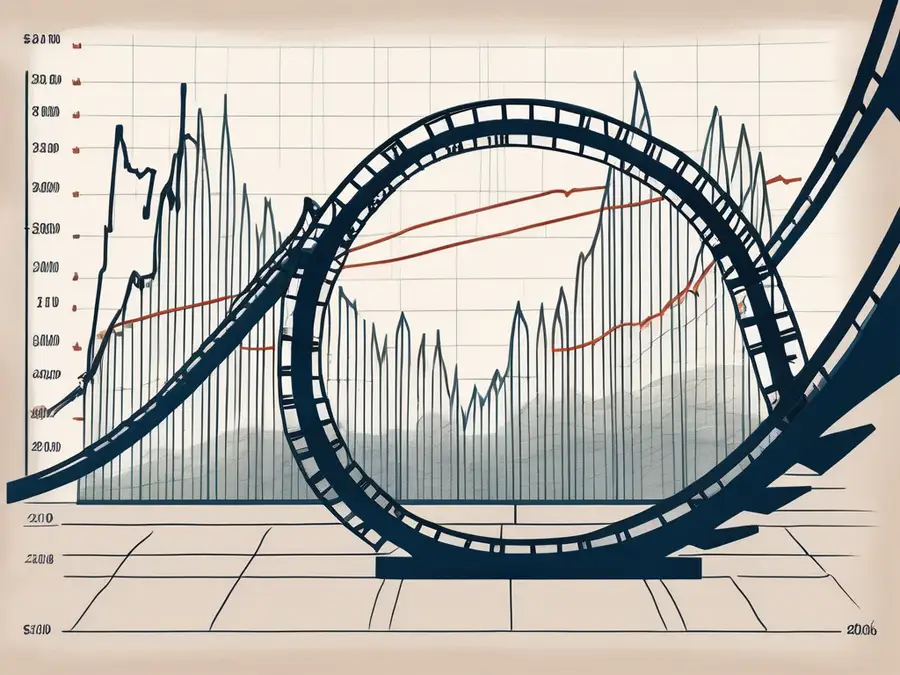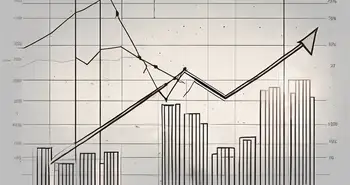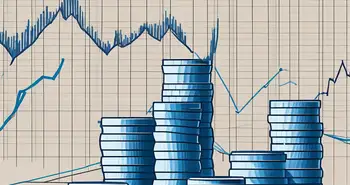The Potential of Cyclical Stocks

As an expert in financial markets and investing, I am thrilled to share with you a comprehensive guide on understanding the potential of cyclical stocks. Whether you are a seasoned investor or a newcomer to the world of stocks, this guide will equip you with the knowledge and strategies needed to navigate the fascinating realm of cyclical stocks.
Defining Cyclical Stocks
Let's begin by clarifying what exactly cyclical stocks are. Cyclical stocks are shares of companies whose performance is closely tied to the economic cycle. These companies belong to industries that experience significant fluctuations in demand and profitability in response to changes in the overall economy.
Understanding cyclical stocks requires delving into the intricate relationship between these companies and the broader economic landscape. When the economy is thriving, consumer confidence is high, and people have more disposable income to spend on non-essential items. This increased spending directly benefits cyclical stocks, as they are often found in sectors such as retail, construction, manufacturing, and travel, which are directly impacted by economic fluctuations.
Characteristics of Cyclical Stocks
Cyclical stocks typically display several distinctive characteristics. Firstly, they show high sensitivity to economic indicators, such as GDP growth, consumer spending, and interest rates. These indicators act as barometers, signaling the overall health of the economy. When these indicators are positive, cyclical stocks tend to perform well, as the demand for their products and services increases.
Secondly, these stocks often experience peak performance during economic expansions and downturns during contractions. During economic expansions, businesses invest in expanding their operations, leading to increased demand for goods and services. This surge in demand benefits cyclical stocks, as their revenues and profits soar. However, during economic contractions, consumer spending decreases, and businesses cut back on investments, resulting in reduced demand for cyclical stocks.
Lastly, cyclical stocks are commonly found in sectors such as retail, construction, manufacturing, and travel. In the retail sector, for example, companies that sell luxury goods or non-essential items are more likely to be cyclical stocks. Similarly, in the construction sector, companies involved in building residential or commercial properties are also considered cyclical stocks. These industries are directly impacted by economic fluctuations, as consumer spending patterns and business investments heavily influence their performance.
Types of Cyclical Stocks
There are several types of cyclical stocks, each with its own unique set of characteristics. Consumer cyclical stocks, for example, include companies involved in producing goods and services that are typically purchased when discretionary income is available. These may include automobiles, luxury goods, and travel services. During periods of economic prosperity, consumers have more disposable income to spend on these non-essential items, leading to increased demand for consumer cyclical stocks.
On the other hand, industrial cyclical stocks encompass companies engaged in manufacturing capital goods, machinery, and equipment. These companies experience increased demand during economic upswings as businesses invest in their infrastructure. When the economy is thriving, businesses are more willing to expand their operations, leading to a higher demand for capital goods and machinery. This increased demand benefits industrial cyclical stocks, as they are directly involved in supplying the necessary equipment for business expansion.
In addition to consumer and industrial cyclical stocks, there are also other types such as technology cyclical stocks, financial cyclical stocks, and energy cyclical stocks. Each of these types has its own unique characteristics and is influenced by specific factors related to their respective industries.
The Economic Cycle and Its Impact on Cyclical Stocks
Understanding the economic cycle and its influence on cyclical stocks is fundamental before delving deeper into the potential of these stocks. However, to truly grasp the intricacies of this relationship, it is important to explore the various phases of the economic cycle and how cyclical stocks respond to these changes.
Phases of the Economic Cycle
The economic cycle consists of four distinct phases: expansion, peak, contraction, and trough. Each phase brings its own set of challenges and opportunities for businesses and investors alike.
During the expansion phase, the economy is growing at a steady pace, and businesses experience increased demand for their products and services. This surge in demand often leads to higher profits and stock prices for cyclical stocks. Companies in industries such as consumer discretionary, technology, and construction tend to thrive during this phase as consumers have more disposable income and businesses invest in expanding their operations.
As the economy reaches its highest point of growth, it enters the peak phase. This phase signals a potential contraction phase on the horizon. During the peak phase, businesses may start to experience diminishing returns as the market becomes saturated and consumer spending begins to slow down. This can have a direct impact on cyclical stocks, as their profitability may start to decline.
The contraction phase is characterized by a slowdown in economic activity. Consumer spending weakens, and businesses face challenges in maintaining their profitability. During this phase, cyclical stocks may face significant headwinds as demand for their products and services decreases. Industries such as automotive, travel, and luxury goods often struggle during this phase, as consumers tighten their budgets and cut back on discretionary spending.
Finally, the trough phase marks the bottom of the economic cycle. Economic indicators start to show signs of recovery, laying the foundation for the next expansion phase. This phase presents an opportunity for investors to position themselves for future growth. Cyclical stocks, which were previously facing challenges, may start to rebound as the economy shows signs of improvement.
How Cyclical Stocks Respond to Economic Changes
Understanding how cyclical stocks respond to economic changes is crucial for investors looking to maximize their returns. During the expansion phase, cyclical stocks tend to perform well as consumer spending rises and businesses invest in expanding their operations. The increased demand for goods and services drives up revenues and profits for these companies, leading to higher stock prices.
However, during the contraction phase, cyclical stocks may face challenges as demand weakens. With consumers cutting back on discretionary spending and businesses scaling back their operations, the profitability of cyclical stocks can be significantly impacted. Investors need to carefully analyze economic indicators and market trends to identify opportune moments to buy or sell cyclical stocks, aligning their investments with the prevailing economic climate.
It is also important to note that the performance of cyclical stocks can vary across different industries and sectors. Some industries, such as technology and healthcare, may exhibit more resilience during economic downturns, while others, such as automotive and construction, may be more susceptible to economic fluctuations. Therefore, investors should conduct thorough research and diversify their portfolios to mitigate risks associated with cyclical stocks.
In conclusion, the economic cycle plays a significant role in shaping the performance of cyclical stocks. Understanding the different phases of the economic cycle and how cyclical stocks respond to these changes can help investors make informed decisions and optimize their investment strategies. By staying attuned to economic indicators and market trends, investors can navigate the cyclical nature of these stocks and potentially capitalize on the opportunities presented by each phase of the economic cycle.
The Potential of Cyclical Stocks
Now that we have established a foundation of understanding cyclical stocks, let's explore their potential and the opportunities they offer for investors.
Benefits of Investing in Cyclical Stocks
Investing in cyclical stocks can offer substantial benefits if timed correctly. During economic expansions, these stocks tend to outperform the broader market, providing the potential for attractive returns. Additionally, as the economy rebounds after a contraction, cyclical stocks can experience significant growth, allowing investors to capitalize on the recovery.
Risks Associated with Cyclical Stocks
While the potential for high returns exists, it is crucial to acknowledge the risks associated with investing in cyclical stocks. These stocks are highly sensitive to economic factors, which means they can also be more volatile than other investments. During economic downturns, cyclical stocks may experience significant declines in value, potentially leading to losses for investors. Proper risk management and diversification are key when considering an investment in cyclical stocks.
Strategies for Investing in Cyclical Stocks
Now that we understand the potential and risks of investing in cyclical stocks, let's explore some strategies to maximize your chances of success when investing in these companies.
Timing the Market with Cyclical Stocks
Timing is crucial when investing in cyclical stocks. As economic cycles tend to be cyclical (hence the name), it is essential to identify the stage of the economic cycle accurately. By studying economic indicators, such as GDP growth and unemployment rates, and analyzing sector-specific trends, you can determine the optimal time to enter or exit a position in cyclical stocks.
Diversifying Your Portfolio with Cyclical Stocks
One of the keys to successful investing is diversification. By spreading your investments across different sectors and asset classes, including cyclical stocks, you can reduce the overall risk of your portfolio. Diversification allows you to balance the potential volatility of cyclical stocks with more stable investments, ensuring that your portfolio remains resilient, even during periods of economic turbulence.
Evaluating Cyclical Stocks
When considering investments in cyclical stocks, it is essential to evaluate them based on various key indicators and factors specific to the company in question.
Key Indicators to Consider
Some key indicators to consider when evaluating cyclical stocks include revenue growth, operating leverage, and debt levels. Revenue growth indicates the company's ability to generate increasing sales during economic expansions. Operating leverage measures the degree to which a firm's operating costs are fixed, which can have a significant impact on profitability during economic downturns. High debt levels may increase the risk associated with cyclical stocks, as servicing debt obligations can become more challenging during economic contractions.
Understanding Financial Statements of Cyclical Companies
Another crucial aspect of evaluating cyclical stocks is understanding their financial statements. By analyzing income statements, balance sheets, and cash flow statements, you can gain insights into a company's profitability, liquidity, and long-term viability. Make sure to pay attention to factors such as revenue trends, debt levels, and cash flow generation, as these can greatly impact the investment potential of cyclical stocks.
Having explored the intricacies of cyclical stocks, it is important to note that no investment strategy is foolproof, and thorough research is imperative before making any investment decisions. Always consult with a qualified financial advisor or do your due diligence before investing.
Now, it's time for my personal advice. Over the years, I have witnessed the ebb and flow of the economic cycle, observing the impact on various industries and stocks. I highly recommend developing a deep understanding of economic indicators and market trends, as this knowledge will enhance your ability to identify opportunities and navigate the dynamic world of cyclical stocks.
FAQ
What are cyclical stocks?
Cyclical stocks are shares of companies whose performance is closely tied to the economic cycle. These companies belong to industries that experience significant fluctuations in demand and profitability in response to changes in the overall economy.
Why are cyclical stocks considered risky?
Cyclical stocks are deemed risky due to their high sensitivity to economic factors. During economic downturns, these stocks can experience significant declines in value, potentially leading to losses for investors. However, by accurately timing investments and practicing proper risk management through diversification, the potential rewards of investing in cyclical stocks can outweigh the risks.
What strategies can I use when investing in cyclical stocks?
Two strategies that can enhance your investments in cyclical stocks are timing the market and diversifying your portfolio. Timing the market involves identifying the stage of the economic cycle and entering or exiting positions accordingly. Diversification mitigates risk by spreading investments across different sectors and asset classes, including cyclical stocks, to ensure a balanced and resilient portfolio.
What factors should I consider when evaluating cyclical stocks?
When evaluating cyclical stocks, consider key indicators such as revenue growth, operating leverage, and debt levels. Revenue growth indicates the company's ability to generate increasing sales during economic expansions, while operating leverage and debt levels may affect profitability and financial stability during economic downturns. Additionally, understanding a company's financial statements, including income statements, balance sheets, and cash flow statements, can provide valuable insights into its overall financial health.
In conclusion, understanding the potential of cyclical stocks requires a firm grasp of the economic cycle, sector-specific trends, and key indicators. By leveraging this knowledge and employing sound investment strategies, you can navigate the dynamic world of cyclical stocks and potentially reap significant rewards.
Ready to take your understanding of cyclical stocks to the next level? Embrace the innovative world of investing with Morpher, the revolutionary trading platform that leverages blockchain technology for a seamless trading experience. With Morpher, you can trade cyclical stocks and a multitude of other asset classes with zero fees, infinite liquidity, and the flexibility of fractional investing. Whether you're looking to short sell during downturns or maximize gains with up to 10x leverage during economic expansions, Morpher empowers you with the tools for success. Sign up today and receive your free sign-up bonus to start trading on a platform that's as dynamic as the markets you're mastering. Sign Up and Get Your Free Sign Up Bonus and revolutionize the way you trade.

Disclaimer: All investments involve risk, and the past performance of a security, industry, sector, market, financial product, trading strategy, or individual’s trading does not guarantee future results or returns. Investors are fully responsible for any investment decisions they make. Such decisions should be based solely on an evaluation of their financial circumstances, investment objectives, risk tolerance, and liquidity needs. This post does not constitute investment advice.

Painless trading for everyone
Hundreds of markets all in one place - Apple, Bitcoin, Gold, Watches, NFTs, Sneakers and so much more.

Painless trading for everyone
Hundreds of markets all in one place - Apple, Bitcoin, Gold, Watches, NFTs, Sneakers and so much more.









